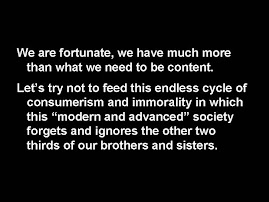Darsanas in Indian Philosophy
It is a brief summary on the darsana's of Indian Philosophy.
The Shad-Darsanas or the Six Orthodox Schools
The Shad-Darsanas or the six orthodox systems grew directly out of the Vedas. Darsana means literally sight or vision. Darsana means a system of philosophy. The Darsana literature is philosophical. Each Darsana is a way of looking into the Truth; is a standpoint in respect of the Truth.
The Shad-Darsana (the six schools of philosophy) or the Shat-Sastras are:
1. The Nyaya founded by Gautama Rishi
2. The Vaiseshika by Kanada Rishi
3. The Sankhya by Kapila Muni
4. The Yoga by Patanjali Maharshi
5. The Purva Mimamsa by Jaimini
6. The Uttara Mimamsa or Vedanta by Badarayana or Vyasa
The Darsanas are grouped into three pairs of aphoristic compositions which explain the philosophy of the Vedas in a rationalistic method of approach. They are:
1. The Nyaya and the Vaiseshika
2. The Sankhya and the Yoga
3. The Mimamsa and the Vedanta
The Vaiseshika is a supplement of the Nyaya. The Yoga is a supplement of the Sankhya. The Vedanta is an amplification and fulfillment of the Sankhya. The study of Vyakarana (grammar), Mimamsa, Nyaya and Sankhya is necessary to understand the Vedanta. The Nyaya sharpens the intellect and enables the aspirants to grasp the Vedanta. The Nyaya is considered as a prerequisite for all philosophical enquiry.
Gautama Rishi systematised the principles of Nyasa or the Indian logical system. Kanada composed the Vaiseshika Sutras. Kapila Muni founded the Sankhya system. Patanjali Maharshi is the first systematiser of the Yoga school. He composed his Yoga Sutras. The Yoga-Darsana of Patanjali is a celebrated text-book on Raja-Yoga. Jaimini, a disciple of Vyasa, composed the Sutras of the Mimamsa school, which is based on the ritual sections of the Vedas. Badarayana composed his famous Vedanta Sutras or Brahma Sutras which expound the teachings of the Upanishads. The different schools of the Vedanta have built their philosophy on the foundation of these Sutras.
The Vaiseshika is not very much in honour now. The Nyaya is popular. The Sankhya is not a living faith. The Yoga is practised by a few in its practical form. The Vedanta is the most popular of all the schools today.
The Nyaya and the Vaiseshika will give you an analysis of the world of experience. They arrange all the things of the world into certain kinds or categories (Padarthas). They explain how God has made all this material world out of atoms and molecules. They show the way to attain knowledge of God. The Sankhya will provide you with deep knowledge of Hindu psychology. Kapila Muni was the father of psychology. The Yoga deals with the control of Vrittis or thought-waves, and with meditation. The Yoga system shows the ways to discipline the mind and the senses. The Yoga will help you to cultivate concentration and one-pointedness of mind and enter into Nirvikalpa Samadhi or the Superconscious State.
The Purva-Mimamsa deals with the Karma-Kanda (rituals- ceremonies) of the Vedas, and the Uttara-Mimamsa is also known as the Vedanta-Darsana. This is the corner stone of Hinduism. The Vedanta philosophy explains in detail the nature of Brahman or the Eternal Being, and shows that the individual soul is, in essence, identical with the Supreme Self. It gives methods to remove Avidya or the veil of ignorance and to merge oneself in the ocean of bliss or Brahman.
The Nyaya calls ignorance Mithya Jnana, false knowledge. The Sankhya styles it Aviveka, non-discrimination between the real and the unreal. The Vedanta names it Avidya, nescience. Each philosophy aims at its eradication by knowledge or Jnana. Then one attains eternal bliss or immortality.
By study of Nyaya and Vaiseshika, one learns to utilise his intellect to find out fallacies and to know the material constitution of the world. By study of Sankhya, one understands the course of evolution. By study and practice of Yoga, one gains self-restraint and obtains mastery over mind and senses. By practice of Vedanta, one reaches the highest rung of the ladder of spirituality or the pinnacle of divine glory, oneness with the Supreme Being, by the destruction of ignorance (Avidya).
Vedanta – The Most Satisfactory System of Philosophy
Some of the doctrines of the Nyaya, the Vaiseshika, the Sankhya and the Yoga are opposed to the teaching of the Vedas. These systems are only superficially based on the Vedas. The Nyaya and the Vaiseshika schools rely too much on human reason, though they accept the Vedas as the supreme authority. Human intellect is frail and finite. It has got its limitations. It functions within time, space and causation. Its findings cannot be infallible. It cannot solve transcendental matters. Vedas only are infallible and authoritative. They contain the revelations or direct intuitional experiences of seers and Rishis. These experiences will tally with the experiences of those who have attained Knowledge of the Self (Brahma-Jnana).
The Vedanta is the most satisfactory system of philosophy. It has been evolved out of the Upanishads. It has superseded all other schools. The Mimamsa school has laid great stress on rituals, or Karma-Kanda.
According to Mimamsa school, Karma or ritual is all-in-all in the Veda. Upasana (worship) and Jnana (knowledge) are only accessories to Karma. This view is refuted by the Vedanta school. According to the Vedanta, Self-realisation (Jnana) is the foremost thing, and ritual and worship are accessories. Karma will take one to heaven which is only an impermanent place of refined sensual enjoyment. Karma cannot destroy the cycle of births and deaths, and cannot give eternal bliss and immortality.
During the time of Sankaracharya, all the six schools of philosophy flourished. Therefore, he had to refute the other systems in order to establish his absolute monism (Kevala Advaita). But, nowadays, Sankhya, Vaiseshika, etc., are in name only. Even now, some Hindu preachers, Sannyasins and Mandalesvars try to establish Advaita Vedanta by refuting these old systems. This is a mistake. They will have to refute at the present moment materialism, agnosticism, atheism and science, and then establish Advaita Vedanta.
The Sutras are terse and laconic. The Rishis have condensed their thoughts in the aphorisms. It is very difficult to understand them without the help of commentaries by great sages or Rishis. Hence, there arose many commentators or Bhashyakaras. There are glosses, notes and, later, commentaries on the original commentaries.
Each set of Sutras has got its Bhashya, Vritti, Varttika, Vyakhyana or Tika and Tippani.
Thursday, February 11, 2010
Subscribe to:
Post Comments (Atom)



No comments:
Post a Comment